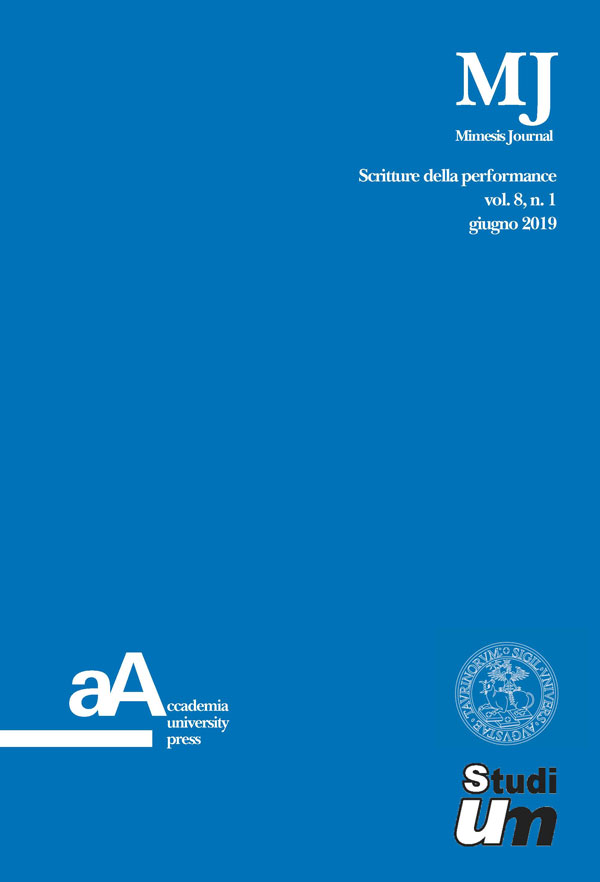Hister Ergo Sum
The representation of hysterical female sexuality, between clinic and theatre
DOI:
https://doi.org/10.4000/mimesis.1634Abstract
Starting at the end of the Nineteenth century, the hysterical body invaded the European medical and artistic scene, giving birth to different kinds of ambivalent performances. The sexed body was the dominant reference in the definition of hysteria, which, for a long time, was considered by medicine as a form of neurosis typical of women/females. The hysterical body, with its troubling sexuality, was considered as the pathological body par excellenceand, as a consequence, had to be regulated. At the Salpêtrière, the Parisian clinic run by Jean-Martin Charcot, the staging of the hysterical body seemingly offered a «great representation of desire» produced by the masculine gaze lingering over a female body: a grotesque body-marionette that moved, miming strong erotic scenes repeated at will under the impulse of a doctor-director. At the same time, the hysterical body began to be investigated also by the performing arts, finding its perfect stage in the performances of Eleonora Duse and, especially, Sarah Bernhardt. Even if in different ways, the two actresses were equally inspired by the hysterical pantomime, which gave them the chance to promote not only an artistic renewal, but also a new image of woman.


